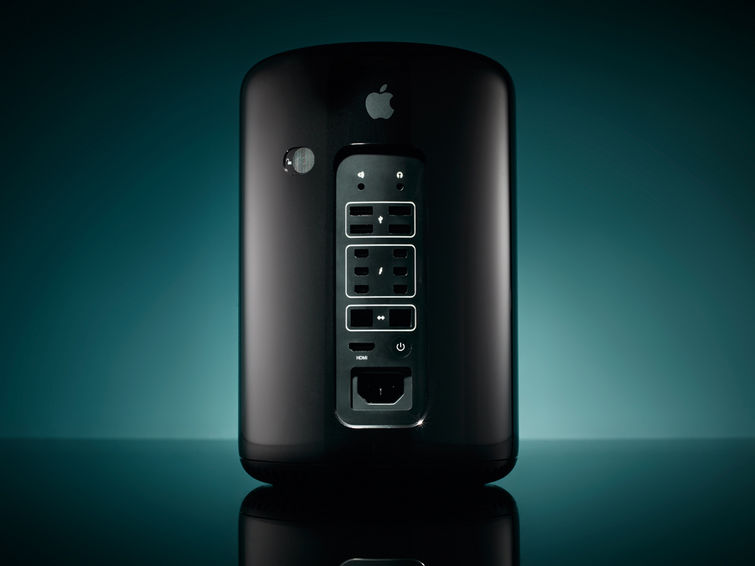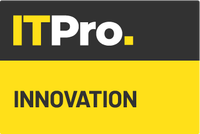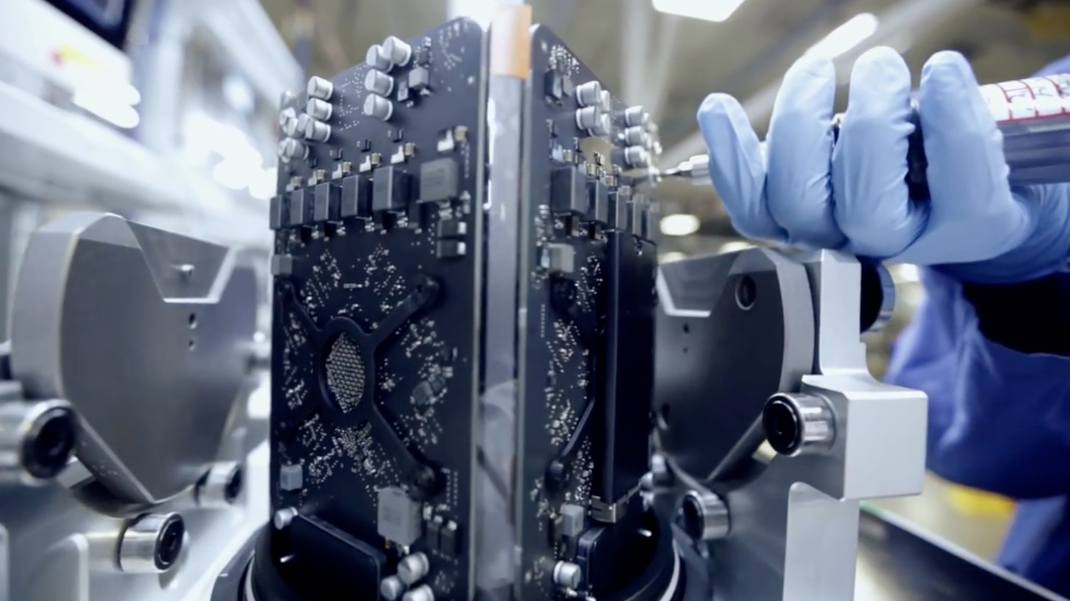Apple Mac Pro review (late-2013)
Packing a Xeon quad-core processor, dual AMD FirePro graphics cards and a superfast PCIe SSD, can IT Pro tame this beast?


If the Mac Pro was a sentient being, it would live by the mantra: Eat. Sleep. Conquer. Repeat. It’s not for everyone, but if you’re in the business of creating high-def multimedia or analysing large volumes of data you’ll struggle to find a better designed, portable, and powerful machine.
-
+
Xeon power & AMD dual-graphics; Designed for use with 4K; Beautifully crafted inside & out; Quiet; Portable; Upgradeable
-
-
Expensive; Cables can get cluttered; No accessories included
Apple has hit back at critics who accused the firm of abandoning the enterprise with its latest Mac Pro.
The late-2013 model crams unprecedented levels of power into a gorgeous and portable 5kg frame. The 10in tall chassis is powered by an Intel Xeon processor and 2 x AMD FirePro graphics cards as standard. It's also capable of housing up to 64GB of RAM and an SSD up to 1TB in size.
The redesigned chassis is eye-catching but don't let the black colour fool you into thinking it's made from plastic. Apple's cylindrical box is crafted using premium Aluminium - which is anodised and coated to give it a gloss finish. It's so shiny, you'll be able to see your face it in.
This isn't the first cylindrical computer case - but when the internal layout is examined you'll see the implementation is unique.
Place the Mac Pro on your desk and you're guaranteed to get colleagues coming over to catch a glimpse. Members of the IT Pro team were imaginative with descriptions of the Mac Pro, comparing it with everything from wine coolers and ice-buckets, to biscuit tins and space-age dustbins. But they loved it really.
The heart of the beast
The single piece of machine Aluminium slides off without the need to detach any screws to reveal the innards.
Sign up today and you will receive a free copy of our Future Focus 2025 report - the leading guidance on AI, cybersecurity and other IT challenges as per 700+ senior executives
Our review unit was made up of a single quad-core Intel Xeon E5 processor and 2 x AMD FirePro D300 graphics cards.
The processor was flanked by user accessible slots for RAM. We had 16GB of memory, and the Mac Pro is capable of housing up to 64GB of memory.
In typical Apple fashion, components have been customised to slot together neatly with rounded corners. The bespoke SSD (256GB in our case) was affixed onto the graphics card with a single screw.
The internal design of the Mac Pro is where the engineering team earned its money. Apple's "unified thermal core" is triangular. This shape acts as a funnel and allows all components to be cooled using a solitary fan on top of the device. In comparison, the previous generation Mac Pro had eight fans.

You may think a single large fan would make the Mac Pro loud, but this isn't the case. You'll struggle to hear the device even when it is being taxed to the maximum. If you're sitting in an air conditioned environment, the chances are you won't hear it at all.
Ports
A workstation needs to be kitted out with plenty of ports and the Mac Pro has a great selection. There are 4 x USB 3 connections, 2 x Ethernet jacks, 1 x HDMI and 6 x Thunderbolt 2.0 ports.

Thunderbolt 2 does bring advantages. The interface supports channel aggregation so two separate 10 Gbit/s channels can be combined into a single logical 20 Gbit/s channel. Each Thunderbolt port on the Mac Pro can support up to 6 storage devices - and a maximum of 36 devices can be daisy chained together.
Thunderbolt 2 is also able to transfer 4K video whilst displaying the ultra-high resolution content on a monitor at the same time.
You can connect up to three 4K displays to the machine - ideal for those carrying out complex tasks like editing video or 3D modelling. If you're not using 4K resolution, it's possible to hook up 6 cinema displays (2560 x 1400).
There's one disadvantage about having all the connections packed together. Once you start plugging in multiple cables, they can get tangled in a web and look messy. But this isn't going to affect the performance of the device.

Performance
When you're forking out over 2,000 for the unit, performance is expected to be top notch and the Mac Pro does not disappoint.
There's a choice between a 4,6,8 and 12-core Xeon processor and the graphics start with the AMD FirePro D300 series, upgradeable to the D700 range.
Apple claims its PCIe SSD provides read speeds of up to 1.2GB/s and write speeds top out at 1GB/s. We achieved maximum sequential read and write rates of 950MB/s and 780MB/s using the Blackmagic disk speed test for Mac. The speed is blistering - and it's noticeable when you're using VMs, and transcoding large files directly to the SSD.

When loading up the FurMark stress test - we were able to get a maximum of 80 FPS with our AMD FirePro D300 graphics cards (2GB vRAM each). This was 6x faster than the last 2013 MacBook Pro, which has Intel's integrated Iris graphics (1GB RAM).
The ability to render effects in real-time is where the Mac Pro stands out too. There's no waiting around for hours. Videos can be edited and processed quickly - especially if you're still using HD and haven't made the jump to 4K.
When using the Mac Pro for heavy workloads we saw temperatures top out at 71 degrees - with the outer shell becoming warm to the touch. However, even when under load for extensive periods of time - the fan remained whisper quiet. Most HD TVs and laptops are louder.
Bootcamp & Parallels
Despite attempts to benchmark the device using our standard set of tests - we were unable to install Windows on our Mac Pro using the BootCamp tool. During every Windows installation we were greeted with the error "Windows could not update the computer's boot configuration" and even a Windows recovery USB was unable to fix this problem.
This issue doesn't seem to be plaguing other devices as our sister site PC Pro was able to get Bootcamp to work on a 12-core model - and there aren't any reports in the Apple forums.
We didn't have any problems using Windows 8 via Parallels - so this is a workaround if you're in urgent need of Microsoft's OS.
Anyone buying this machine will be using OS X Mavericks - and we had no problems with Apple's defacto software. Besides, if you want to use Windows as your primary OS, the Mac Pro isn't for you.
Upgradeability
One of the core areas where the Mac Pro differs from other Apple products is upgradeability. This is the most end-user accessible product Apple has made, and we're sure Steve Wozniak would be proud to have his name attached to this machine.
Apple hasn't used any proprietary screws or glue. Core components like the fan, RAM and SSD are replaceable with minimum effort. Even the CPU is user-replaceable, although more fiddly.

Teardown website iFixit has given the late-2013 Mac Pro model a score of 8/10 - unheard of for Apple products especially when compared to the firm's other products. The MacBook Pro (late 2013) scored 1/10 and iPad Air was awarded 2/10 - making them a nightmare to repair.
Use cases
The Mac Pro will excel at video editing because it's dual-GPUs are setup to run with Final Cut Pro X. It's ability to handle 4K streams also gives it a degree of future proofing.
However, the Xeon CPU, AMD graphics cards and lightening quick SSD can also be used in a variety of other business sectors where large chunks of data need to be processed. We wouldn't be surprised to see this pop up in oil and gas industries or financial sectors.
Pricing
The Mac Pro isn't going to be for everyone - and this is reflected in the price point.
The base configuration starts off at 2,500 inc VAT. This buys you an Intel Xeon E5 quad-core chip running at 3.7GHz and with 10MB of L3 cache, 12GB of DDR3 ECC RAM and a 256GB PCIe flash storage drive. Graphics come in the form of two AMD Dual AMD FirePro D300 GPUs with 2GB of GDDR5 VRAM each.
Our review unit started at 2579 - and was equipped with the baseline quad-core Xeon E5 3.7GHz processor, 2 x AMD FirePro D300s with 2GB of vRAM, 16GB of RAM and a 256GB SSD.
The maximum spec will set you back an eye-watering 7779 - and this doesn't even include accessories.
Then you've got to factor in the cost of displays. Apple is selling a Sharp 31.5in 4K (3840 x 2160) display for 3,500. The firm also offers 27in Thunderbolt cinema displays for 900. Of course cheaper alternatives are available.
The Mac Pro might be expensive when when compared to Windows counterparts but it's not extortionate. A rival Dell Precision T5610 workstation packing a Xeon E5 six-core processor (2.1Ghz), Windows 7 Pro, 8GB of RAM, a 500GB hard drive and 3GB Nvidia Quadro K4000 graphics card costs 2,284.29. It might be cheaper, but it doesn't have SSDs or expandability via Thunderbolt.
Warranty options
Apple's after-sales support might not be as comprehensive as other vendors, but you still get online and 90-day phone support within the first year of the Apple warranty.
If you fork out another 199, you get three years of Applecare coverage - this includes onsite-repair requests and technical support over the phone. The Mac Pro, it's accessories such as SuperDrive and the power adaptor as well as RAM and Airport functionality are all covered under this.
Overall
Yes it's expensive - but after testing we feel the Mac Pro is worth it if you will utilise it to its full potential. Workstations have never looked so good and you get performance, upgradeability and portability as well.
The Mac Pro will work best for those in the video editing and 3D modelling fields but it is a versatile machine. If your business is using OS X products to process heavy duty workloads, then it will serve you well.
Verdict
If the Mac Pro was a sentient being, it would live by the mantra: Eat. Sleep. Conquer. Repeat. It’s not for everyone, but if you’re in the business of creating high-def multimedia or analysing large volumes of data you’ll struggle to find a better designed, portable, and powerful machine.
Processor: Intel Xeon E5 (3.7GHz) configurable up to 12-core processor (2.7GHz)
RAM: 12GB up to 64GB supported
Graphics: Dual AMD FirePro D300 graphics processors with 2GB of GDDR5 VRAM each. Customisable up to D700 with 6GB vRAM each
OS: OS X Mavericks 10.9.1
Storage: 256GB SDD up to 1TB SSD supported
Connectivity: 802.11ac Wi-Fi wireless networking; IEEE 802.11a/b/g/n compatible, Bluetooth 4
Ports: 4 x USB 3, 6 x Thunderbolt 2, Dual Gigabit Ethernet, 1 x HDMI 1.4
Weight: 5kg
Dimensions: 251mm height, 167mm diameter
-
 Trump's AI executive order could leave US in a 'regulatory vacuum'
Trump's AI executive order could leave US in a 'regulatory vacuum'News Citing a "patchwork of 50 different regulatory regimes" and "ideological bias", President Trump wants rules to be set at a federal level
By Emma Woollacott Published
-
 Microsoft Excel is still alive and kicking at 40 – and it's surging in popularity as 82% of finance professionals report ‘emotional attachment’ to the spreadsheet software
Microsoft Excel is still alive and kicking at 40 – and it's surging in popularity as 82% of finance professionals report ‘emotional attachment’ to the spreadsheet softwareNews A recent survey found Gen Z and Millennial finance professionals have a strong “emotional attachment” to Microsoft Excel
By Emma Woollacott Published
-
 LastPass hit with ICO fine after 2022 data breach exposed 1.6 million users – here’s how the incident unfolded
LastPass hit with ICO fine after 2022 data breach exposed 1.6 million users – here’s how the incident unfoldedNews The impact of the LastPass breach was felt by customers as late as December 2024
By Emma Woollacott Published